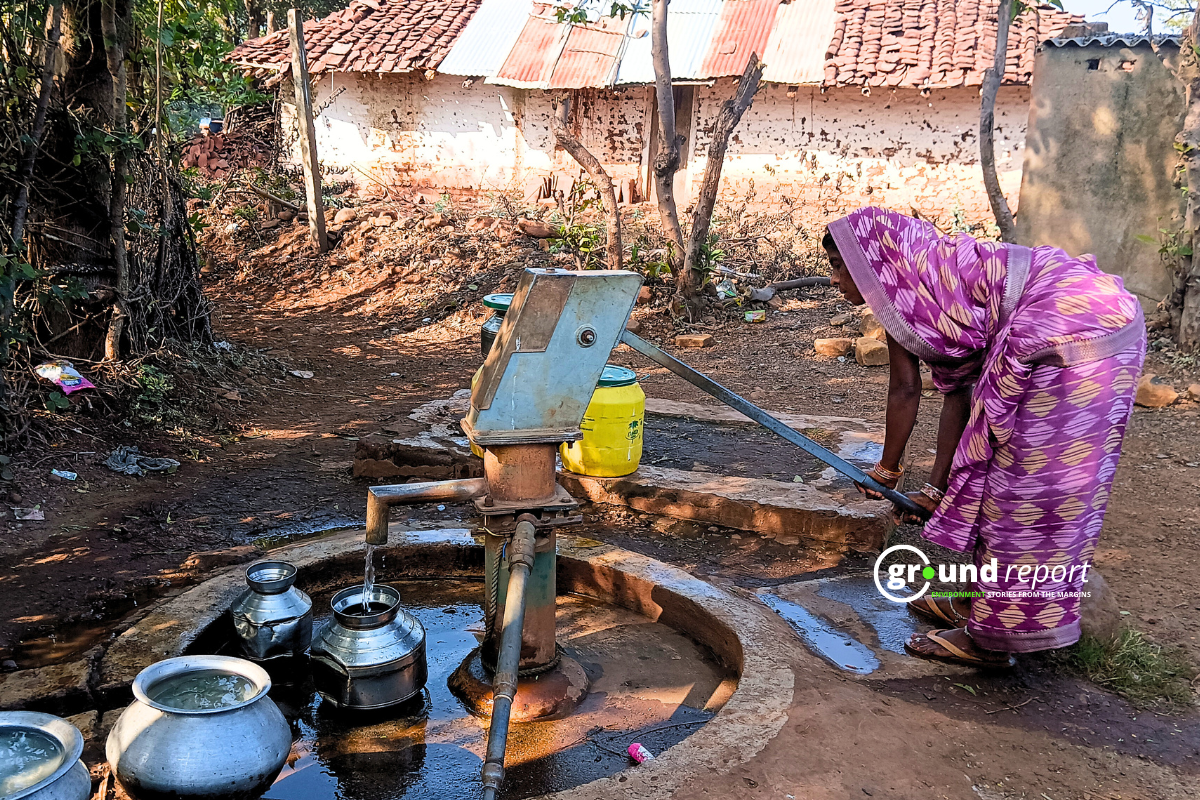The Van Panchayats in Uttarakhand were born out of the conflicts and compromises that followed settlements and forest reserves in the hills at the beginning of the last century. The first approved Van Panchayat government was thus formed in 1921.
According to recent estimates, 6,069 Van Panchayats are managing 405,426 hectares of forest (13.63% of the total forest area) in the state. Most of these have been excavated in civil (protected) forests under the jurisdiction of the Department of Revenue. The area under each Van Panchayat varies from a fraction of a hectare to more than 2,000 hectares.
Between 2000 and 2013, Chandan Singh served as the sarpanch (chief) of the Van Panchayat land, which measures about 20 hectares, which is managed by 52 families from Meora village under a forest management system that was institutionalized in 1931 in the state of Uttarakhand, in the Himalayas.
Chandan Singh noted, during his tenure as sarpanch and even afterwards, that the Van Panchayat meetings, once regular and active in deciding the rules and regulations by which these common resources would be managed, were becoming less and less frequent. And when they happen, only five to ten people attend.
Based on these recommendations, British officials recognized the role of communities in forest management and in 1931 the Forest Panchayat Act was enacted under Section 28(2) of the Indian Forest Act 1927. The Act resulted in the formation of village forest councils with powers to design and implement the rules for accessing and distributing forest resources, monitor them, impose sanctions on offenders, and judiciously generate and use revenues for forest welfare.
During the last eight decades, the number of van panchayats in Uttarakhand has multiplied. Almost 71% of the total geographic area of the state is covered by different kinds of forests: 45.4% is classified as reserve forest, 8.92% as civil and soybean forest, 0.18% as protected forest, 13.41% as panchayati forest and 0.29% as private forest. . The van panchayat areas are carved out of civil and soybean forests. While the official record suggests that there are currently 12,167 van panchayats managing 7,32,688.9 hectares of forest area, the reality on the ground paints a bleak picture.
The Van Panchayats of Uttarakhand are known for managing community forests efficiently. Each Van Panchayat sets its own rules for using, managing and protecting the local forest. These rules range from the selection of rangers to the sanction of defaulters. In the town of Sarmoli de Virdi, the fine can range from 50 to 1,000 rupees.
“The Van Panchayat do all the work related to environmental protection, such as reviving water sources, water conservation, forest fire protection and planting,” says Puran Singh Rawal, who is the sarpanch of Adauli Van Panchayat in Bageshwar district.
Rawal gives insight into how his people fight forest fires. First, they routinely collect fallen leaves and dry bushes and keep them aside. This is to ensure that the fire does not spread from below. Two, they have identified the water sources they can go to in case of fire.
In the last week of May 2022, a small fire broke out on the Van Panchayat land of Meora, near Chandan Singh’s home. The villagers who were in the forest collecting firewood at the time rushed to put out the fire.
In the scorching heat of summer, says Chandan Singh, wildfires are common in Uttarakhand’s forests. Between October 2020 and April 2021, wildfires occurred in 989 locations in Uttarakhand.
The state has lost nearly 3,000 acres of registered forest area to these fires, which have grown more ferocious as climate change raises temperatures with each passing year. But on Van Panchayat land, villagers serve as front-line defenders against the ravages of bushfires.
The Forestry Council Act prescribes how Panchayats (Councils) may be formed and imposes duties on village Panchayats. The objective is to protect forest areas and ensure that forest products are distributed among rights holders in an equitable manner.
The Kumaun Panchayat Forest Regulations promulgated under section 28(2) of the Indian Forest Act, 1927 provide general guidelines for the supervision and management of forests under the control of the Van Panchayats. These Forest Council rules set out the general parameters of management practices to be followed by the Van Panchayats.
Govind Singh Bisht, 67, carries a file filled with more than 100 sheets of paper with him whenever he comes across someone seeking information on Van Panchayats. The documents date back to the late 1990s and include complaints, first information reports (FIRs) to the police, court letters, an “information repository proving how our village Van Panchayat works,” he said.
Govind Singh is from the village of Ghargaon and has been neither a member of the Van Panchayat nor a sarpanch. He was a member of the Rashtriya Swayamsevak Sangh (RSS), a Hindu nationalist organization, since 1975, and has twice stood in local elections without success. Despite the defeats, he remains involved in local affairs, particularly the status of Van Panchayats. “But,” he said, “no one takes me seriously.”
Over the past two decades, Govind Singh has written regular letters to the Branch Magistrate as well as local representatives in the state government and local representatives in New Delhi. His letters ask the government to identify the Van Panchayat lands that belong to his village. “Much of the land, which is on paper, is invaded in reality,” he says. “The villagers are not ready to believe, because they cannot identify what is the Van Panchayat land and what is the village’s agricultural and residential land.”
In June, Van Panchayat Sangharsh Samiti held a meeting in Bhowali, Nainital with several Van Panchayat Sarpanch on their demand for the implementation of community forest rights under the Scheduled Tribes and Other Traditional Forest Dwellers (Recognition of Forest Rights) Act. Forestry) of 2006.
“Implementation of the Forest Rights Act in general and the provision of community forest rights, in particular, has been very slow in Uttarakhand state,” said Joshi of Van Panchayat Sangharsh Samiti.
A 2019 investigative report by Community Forest Rights Learning and Advocacy Process (CFR-LA), which works on Community Forest Rights (CFR), stated that not a single individual forest right or community right title has been issued in Uttarakhand, while more than 3,000 Community Rights claims and more than 3,500 Individual Forest Rights claims have been filed in the state.
“In the absence of a strong Van Panchayat system,” said Joshi, “the implementation of community forest rights has been our only hope to protect Uttarakhand’s forests and claim customary rights.”
Keep Reading
Part 1: Cloudburst in Ganderbal’s Padabal village & unfulfilled promises
India braces for intense 2024 monsoon amid recent deadly weather trends
Support us to keep independent environmental journalism alive in India.
Follow Ground Report on X, Instagram and Facebook for environmental and underreported stories from the margins. Give us feedback on our email id greport2018@gmail.com.
Don’t forget to Subscribe to our weekly newsletter, Join our community on WhatsApp, and Follow our YouTube Channel for video stories.









